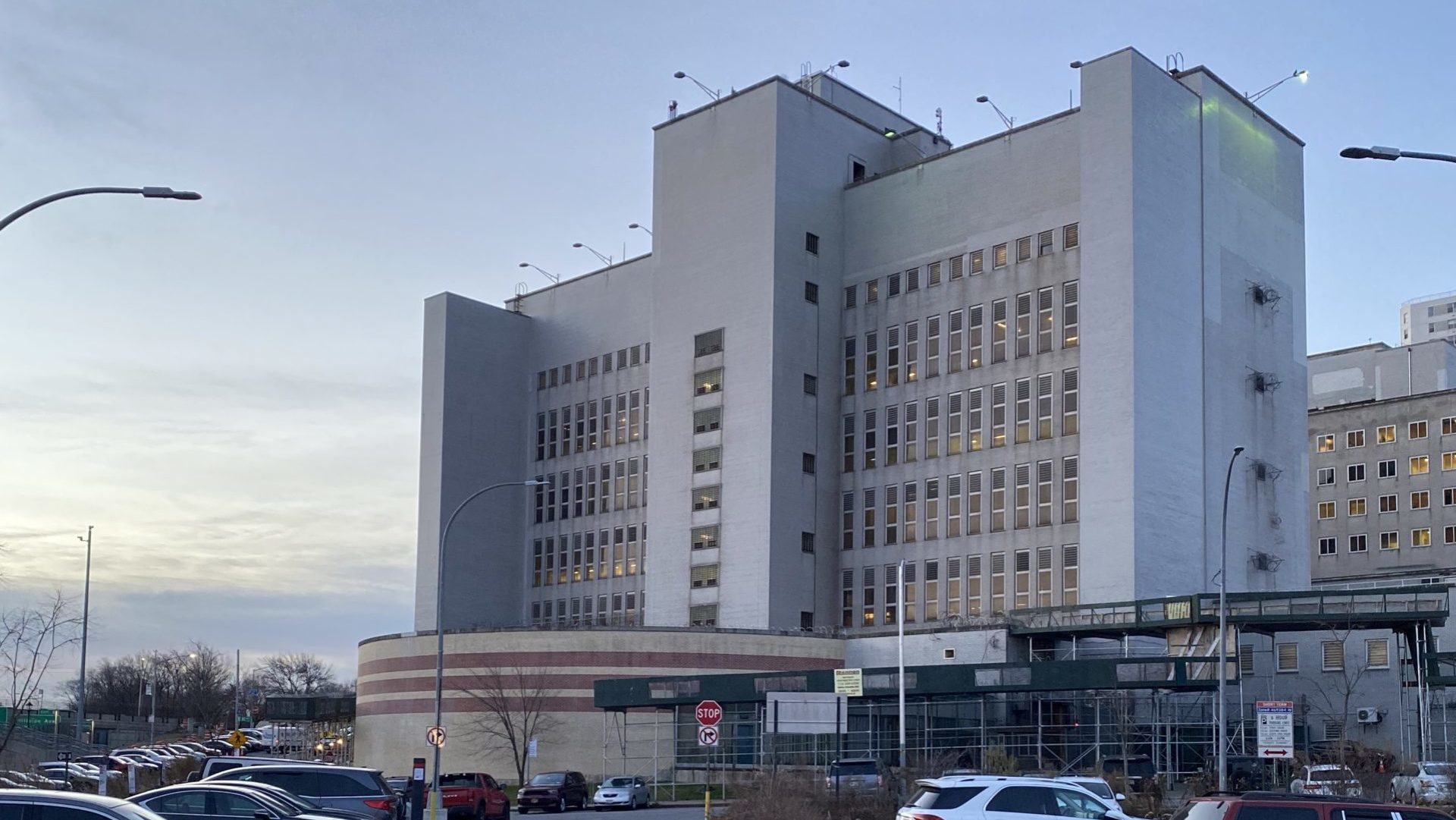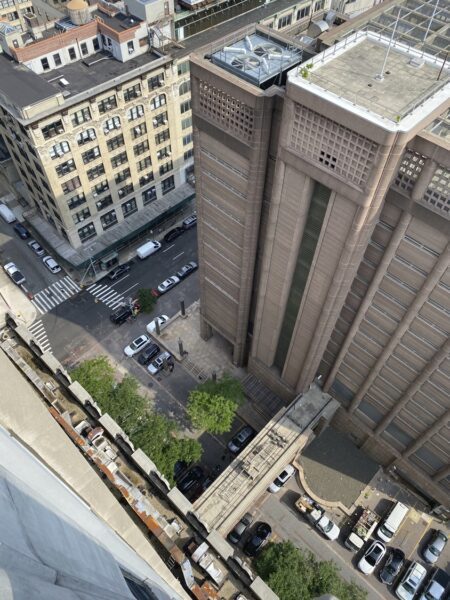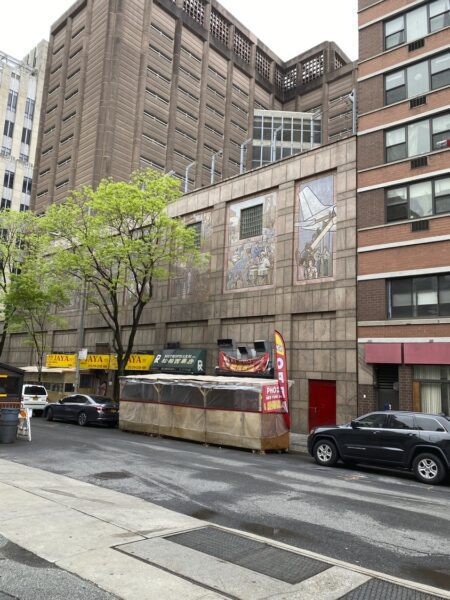


Dismantling contracts in the Bronx, Brooklyn, Queens, and Manhattan have received notices to proceed on the New York City Department of Design and Construction’s (DDC) $8.7 billion Borough-Based Jail (BBJ) Program! At each of the four project sites—one in each of the boroughs mentioned above—teams are already hard at work dismantling existing facilities, setting up swing space, constructing parking garages and other essential infrastructure, and preparing the sites for new corrections facilities. As part of a joint venture (JV), Hill International, Inc. was awarded a contract by the DDC to serve as program manager for the BBJ Program.
Trying New Things
The DDC is going about this Program in a novel way: the BBJ is the City of New York’s first use of design-build (DB) delivery. DB projects and programs can offer exceptional value for owners, often outperforming both design-bid-build (DBB) and construction manager at-risk (CMAR) projects with respect to cost and schedule. This delivery method can also save time by eliminating the need for a second procurement process and allowing the DB firm to begin construction while design is still underway. These factors contribute to cost savings as well. In addition, DB can be more harmonious, as the designer and builder are not contracted separately. A more harmonious project leads to better performance in a variety of areas and helps prevent claims. However, to deliver a product that meets owner expectations, DB projects and programs often require additional management support.
Making the Most of DB
“Structuring a DB procurement can be challenging for owners who are familiar with the more traditional DBB model,” explains Hill Project Manager Todd Appell. “All of a sudden, you’re looking for firms and teams with different profiles and capabilities than you’re looking for in DBB. Owners also have to have a really well-defined vision and an understanding of their stakeholders’ expectations from the outset, as well as a willingness to actively participate in the development of their DB projects. There also needs to be a real mental and organizational shift from DBB to DB. Otherwise, there is a risk of losing control over the outcome.”
In a DB procurement, a contractor generally bids on an incomplete design proposal. While this can save time, it almost ensures some additional risk down the line. For example:
All of these factors can lead to changes that result in additional costs for an owner. Across a complex program like the BBJ, those changes can quickly add up. However, additional management expertise can support DB delivery by alleviating many of these challenges. On the BBJ Program, the AECOM-Hill JV brings an in-depth understanding of all the stakeholders involved in the Program, having worked with the Department of Correction, the Mayor’s Office of Criminal Justice, and the DDC. The JV also has experience managing DB programs, capital programs, and correctional facilities both in New York City and throughout the U.S. The JV has used this experience to drive Program success and help ensure all of DB’s attributes, as well as its potential benefits and limitations, have been clear to the DDC from the outset.
Specifically, the JV is working directly with the DDC and coordinating with all relevant NYC agencies to structure the DB procurement and develop the Program requirements. Leveraging its experience with City stakeholders and comparable DB programs, the JV team helped confirm request for qualifications and request for proposal documents were complete and accurate, and that procurement results in the best value for the owner. With the JV’s support, the DDC selected its DB teams in a holistic way, awarding contracts based on no one factor alone. The successful DB teams offered the right balance of price, experience, vision, and quality for the complex and high-profile Program.
As design and construction advances, the JV continues to provide the resources the DDC needs to successfully review designs, develop estimates, track funding, control projects, facilitate collaboration among the whole Program team, and report on Program progress. This helps support the DDC’s in-house resources and will help keep the Program’s projects in-sync and in line with owner expectations.

Starting Strong with Demolition Estimates
One of the JV team’s most important responsibilities so far has been generating estimates for demolition and site preparation to clear the sites in the boroughs for the new facilities. Estimation comes with added risk on DB projects because of the incomplete nature of the design after bidding. In addition, as the first construction activity to take place, demolition exposes the team to any unexpected conditions or hazardous materials. This makes accurate demolition estimates critical to positioning projects for cost and schedule success early.
For the BBJ, each demolition involved very different conditions. At the Manhattan site, two high-rise structures had to be demolished. One was 220,990 SF of reinforced concrete, and the second was 212,370 SF of concrete and steel. The 240,000 SF building in Brooklyn was reinforced concrete. In Queens, the building to be demolished was approximately 140,754 SF and included a surface parking lot constructed on the site of a former multilevel parking garage, where portions of the foundation and pile structures were left below grade. Both the Manhattan and Brooklyn buildings were located in densely populated residential and commercial areas. The Bronx location did not have an existing building structure above grade but included the excavation and removal of the remaining foundation and structures from a demolished hospital that previously occupied the site. This hospital covered approximately one full city block. This generated a different estimating scope and included additional types of potential hazardous material removal.
“Since the BBJ projects are DB, the estimating process was not as simple as doing take offs from a set of drawings,” explains Appell. “Instead, we had to rely on archived as-built and contract drawings, previous geotechnical investigations, existing and surrounding landmark building status information provided by DDC and the end user. We used those materials to define the types of building construction, physical location, and logistics, and review any subsequent building additions or prior hazardous material abatement projects. In addition, we had to review the NYC Department of Building’s code requirements for demolition. These include the protection of adjacent landmark buildings—some of which were to remain fully occupied—with stringent noise, and dust, and vibration mitigation plans and processes, maintenance and protection of traffic, and limitations on types of demolition equipment allowed.”
There were other challenges as well. The Manhattan facility is on a potential archaeological site, requiring environmental and archaeological investigation per the NYC Landmarks Preservation Commission. Three of the four sites are within the influence lines of Metropolitan Transportation Authority (MTA) subway tunnels, requiring coordination with the MTA throughout construction. Dewatering is another major concern and requires mitigation during construction. Decoupling and artwork removal also need to be addressed prior to the commencement of work.
By careful attention to all of these needs and after several in-person site visits, the JV team was able to define the demolition scope. Hill’s estimators then determined square footages of existing structures with Bluebeam and quantified selective demolition and hazardous material abatement work scopes. Finally, by drawing on an internal data base of past project estimates and calling vendors for scaffold, custom sidewalk sheds, and tenting costs, Hill assembled estimates for each of the four sites.
Building A Strong Program
By strengthening the DB procurement process and supplying estimates for demolition, the JV has already helped the DDC lay sound foundations for the BBJ Program. As construction continues, the JV will continue creating value by monitoring and reporting on project progress to help ensure the DDC gets the most out of New York City’s first DB program. “We look forward to our work on the BBJ,” adds Appell. “I’m proud of what we’ve already done, but it’s important for me to keep the big picture and end goal in mind. We’re aiming to deliver the City’s vision. That means an efficient Program, a safe one, and one respectful of the people living and working around the new facilities.”
Share

June 23, 2025 | Articles
Jeffrey Hurley Joins Hill’s Northern California Rail Practice

June 23, 2025 | Articles
Ready, Set, Grow: First VP Chad Koelling Takes Charge of Hill’s Mountain West Region

June 8, 2025 | Articles
PMO in Saudi Arabia: The Holistic Approach to Realizing a National Mega-Portfolio

June 1, 2025 | Articles

May 26, 2025 | Articles

May 12, 2025 | Articles
Keeping Your Water/Wastewater Programs Flowing with Public Relations

April 27, 2025 | Articles
Oiling the Machine: Steps to Successful Permitting on Infrastructure Megaprojects

April 20, 2025 | Articles
Sustainable Scaling: Solutions for Managing Risk on Europe’s Data Center Projects